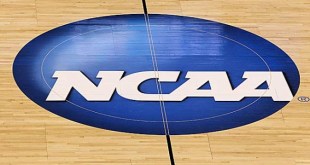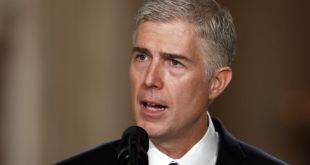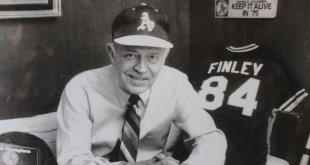At the beginning of the season there was a hue and cry about Kris Bryant’s delayed promotion to the Chicago Cubs Major League roster. Bryant and his agent Scott Boras, as well as other players and the union protested the system, which, ironically, the union and players helped create through years of collective bargaining. This system is wholly based on Major League Baseball’s salary structure. The real danger in the manipulation of service time is not with initial Major League call-ups, but when players already with considerable time on the Major League roster are sent down to the Minor Leagues. Such could be the case of the Philadelphia Phillies recent handling of Cody Asche.
The salary structure in baseball, as it currently stands, is based on players’ service time at the big league level. The faster service time is accrued the quicker a player reaches salary arbitration to escape the minimum salary floor and eventually reach free agency. A full year of Major League service is 172 days. While the MLB schedule accounts for 162 games and 21 off-days for a total of 183, only 172 days on the MLB roster are needed to accrue a full year. As a result if a team ensures that a player is only on the roster for 171 days his rookie year, he won’t accrue enough service time to reach free agency after six seasons[i] at the big league level. So one day of service, or lack thereof, equals another year of team control. Under this system a team would be foolish not hold a prospect back to gain an extra year of team control. It’s not about cost savings but ensuring exclusive control over an asset for an extra year. This is why the Cubs didn’t promote Kris Bryant until mid-April, and why the Dodgers arguably blundered in adding rookie Joc Pederson to their Opening Day Roster.
The term Service Time Manipulation has been used when discussing the Kris Bryant situation. Despite Theo Epstein and the Cubs defense that waiting to promote Bryant involved player development, his citing of “baseball reasons” certainly includes maintaining an asset on the field for an extra year. But I’d take it one step further. I’d argue that waiting to promote a prospect at the start of the season is not Service Time Manipulation.
The current salary structure is as old as free agency itself and was introduced by MLBPA legend Marvin Miller. Following the Messersmith-McNally arbitration ruling that the reserve clause gave clubs only an additional 1-year of control after the contract’s expiration, over 300 players indicated their intention to explore free agency after the next season. Marvin Miller, then the Executive Director of the players union, was worried about the excess supply of players in free agency devaluing contracts. As a result, MLB and the union agreed to the current salary structure as part of the 1976 Basic Agreement (CBA). By maintaining the current system through decades of collective bargaining the union rubberstamped management’s ability to run players through the established salary growth process. Deciding when to start a player’s clock on the road to salary arbitration and free agency was left to the sole discretion of the club.
The perceived problem with the start of a first-year player’s service clock has potential fixes. For one, changing the requirement of 172 days for a full year of service to occupying an active roster spot for a certain percentage of games, for argument’s sake 75%. This would require a player to stay in the Minors for 42 games and not join the Major League roster until mid-May. This would have made the Cubs, or any other team legitimately competing for a playoff spot, think twice about holding back Kris Bryant. However, to make such a change the union would have to give something back to management. As this affects only a handful of players a year, I sincerely doubt the union would surrender something like Super-Two rights or substitute an international draft for the international bonus system currently in place in order to change the service time calculation.
To be clear – Service Time Manipulation is not a technical term. The phrase doesn’t appear, even once, in the Basic Agreement. Its sole application is through the broad grievance procedure outlined in the CBA that provides for an arbitration panel to hear a dispute emanating from different interpretations of either the Uniform Player Contract (UPC) or the Basic Agreement.[ii] In the case of Service Time Manipulation a grievance would be brought alleging fraudulent action by a club to avoid initiating or paying a player’s contractual rights.
Cody Asche, who’s in his second full season with the Phillies, could potentially file grievances for (a) lost MLB pay, and (b) possible Service Time Manipulation if his ability to qualify for early salary arbitration was affected by a 17-day Minor League demotion in May. Although for this seventeen-day demotion to have an impact Asche would need to be demoted for at least another 3 days as Article XXI of the CBA stipulates that total Minor League assignments of less than 20 days during one season shall count as service time. I had the chance to watch the third baseman turned leftfielder in a game in Baltimore. During the game, Orioles right-fielder Travis Snider smacked a line drive deep to left-center field. Asche got turned around while tracking the ball, but still had a chance to make the catch. Instead the ball hit off his glove, bounced off the wall, and fell in for a double (a clear case of home-scoring in my opinion). This was a catch an average Major League outfielder should have made. Having played just 17 Major League games in leftfield to date, we are left with an overly small sample size.
Nonetheless, Asche is rated as a below average outfielder with -3 Defensive Runs Saved (DRS) and -4 Ultimate Zone Rating. This means that over the course of time his lackluster defensive play will cost his team between three and four runs. Out of 45 players who have played at least 140 innings in leftfield, Asche ranks 36th in DRS.
Prior to 2015, Asche never played a professional game in the outfield. Never. Not one. Meanwhile the Phillies have had highly regarded third base prospect Maikel Franco developing at the high levels of minors for the last two seasons. Installing Asche as their everyday third baseman just last season the Phillies knew that a logjam at third base was coming. They also knew the likely scenario would require Asche play the outfield. Given the Phillies aging roster and talent deficiency among position players, it was unlikely the Phillies would trade either of these young, cost controlled players. Yet the Phillies never had Asche play the outfield once Franco established himself as a top prospect in 2013. Making matters worse, according to Buster Olney of ESPN, the Phillies never even worked Asche out in leftfield during Spring Training despite knowing that Franco was nearing a Major League call-up after playing a full season in Triple-A in 2014.
Nevertheless, the Phillies demoted Asche to Triple-A Lehigh Valley on May 12 with Manager Ryne Sandberg explaining, “it’s for the betterment of him and thinking about the player and a position change. For him to be prepared to do that at the major-league level, as an organization we thought it was important for him to go get a number of games and break in that way.” Despite Sandberg’s comments, Asche’s outfield defense still isn’t Major League ready. So why should he lose Major League Salary[iii] for the club’s lack of planning and foreword thinking? Were those 17 days at Triple-A so much more productive and helpful than 17 days at the MLB level learning the position? Plus, it is not as if the Phillies were in contention or planned to be in contention with a record of 11-23 with just three position players posting a positive Win Above Replacement (WAR). It’s not as if the Phillies could point to Asche’s bat and say they needed to get more production from his lineup slot when they recalled pitcher Sean O’Sullivan and brought Asche back just 17 days later. That’s not to say that maybe the Phillies intent was to manipulate service time, but nonetheless that could be the effect of the demotion.
Coming into the 2015 season, Cody Asche had 1 year 62 days of Major League service. It’s conceivable that if Asche amassed a full year of service he could be eligible for Super-Two status and qualify for early arbitration which would net at minimum three to four million dollars in earnings before reaching free agency. With Super-Two status reserved for the top 22% of players with between 2 and 3 years of total major league service who played in at least 86 games that season, it is unlikely that Asche will qualify with 2 years and 45 days. But with mere days of service affecting Super-Two qualification, Asche’s learning a new position mid-season in the Minor Leagues could provide the Phillies with millions in cost savings.
If the MLBPA is truly concerned with Service Time Manipulation then they should protect their rank-and-file membership, like Cody Asche, from literally paying the price for unnecessary Minor League demotions. That’s not to say that, if it came about, winning a grievance brought on the basis of Service Time Manipulation will be easy. The club can usually point to legitimate baseball reasons for making the roster move, such as needing an extra arm on the roster. But the facts in this case seem to dictate otherwise. If the union were to show that they are paying attention to genuine issues surrounding service time instead of those motivated by headlines, perhaps they’d force a change in club behavior and, maybe, even have teeth when discussing service time calculation at the bargaining table.
[i] Players attain free agency after accumulating six full seasons worth of Major League Service.
[ii] The Grievance Procedure is outlined in the CBA under Article XI
[iii] 17 days (9% of the MLB Calendar) in Triple-A results in an earnings loss of over $46,000.
 The Sports Esquires Putting Sports on Trial
The Sports Esquires Putting Sports on Trial






This is a really wonderful, well thought out article with some great critical thinking applied to a very complex problem. Honestly it asks so many questions it shows how complex the situation is and how the answer isn’t all that simple.
I’m curious about one thing. Major league players only exist because there is a farm system. It helps develop, stash and rehab players. It’s a great thing to have. Yet it is my understanding that there are a lot of very necessary journeymen in that league that are badly compensated as well as coaches. Is this correct?
If it is, and given all the money in MLB that benefits from this I would love to see an article exploring this and I’d love to the the MLB Players standing up at the next CBA to get minor league players compensated a little better, maybe even have pension plans. Not every minor league player makes it to the bigs. I fact few do. But they are just as important. I’m not saying compensate them like a big leaguer but a reasonable living and a chance to retire with a pension seems fair to me for guys who devote their lives to ensure the players that do hit the bigs closer to “ready”.
What do other people think?
Cody asche is a replacement level player who could’ve been fairly demoted when Franco came upend then left in triple A as depth. He doesn’t have the defensive prowess to be an infield backup and I’d argue he is probably not one of the better left field options even in an organization like the Phillies.
If he can become a competent fielding left fielder he could maybe be a viable bench player, but it’s not like this is some injustice in the way the Bryant (or even Franco) situation was. He’s a fringe guy anyway, and those guys get pulled up and sent down all the time.
Very interesting thanks
While I think there is a legitimate point to be made about service time manipulation, I am not sure Cody Asche is the case you want to latching to. At the time that he was sent down, his triple slash was .245/.283/.349 which is only slightly down from his career numbers entering this year of .247/.307/.390. That is not even acknowledging that he has produced negative value defensively at 3B.
If anything, the Phils have been incredibly generous to move him to the least demanding defensive position and bring him back up when he has yet to demonstrate his bat is capable of being an everyday middle infielder let alone a corner outfielder spot.
The article, while interesting, fails to discuss the primary argument a player such as Cody Asche could make under the MLB CBA. The CBA and the Player’s UPC require that options to the minor leagues be based on skill and ability. As such, if Asche could prove that the Phillies’ decision to option him to the minor leagues was based on its desire to delay salary arbitration and/or free agency, his grievance would be successful. The arbitrators in baseball have imposed a heavy burden on the player when he asserts his option was not based on skill and ability, as the Team only needs to show it acted in good faith and that it had a “rational” baseball reason for its decision. Nevertheless, there are grounds for a grievance if the Team is not able to present such a reason or if that stated reason is not “rational” under the circumstances. While the Union has yet to file a grievance on behalf of players such as Kris Bryant, in my view, assuming the player is on the 40-man roster, he could argue that the Team’s decision to option him to AAA coming out of spring training was not based on his skill and ability, but rather was done to limit his service time. That is why GM’s such as Theo Epstein are always careful to provide some baseball-related reason for the option.
Larry, thanks for your contribution. It’s always appreciated when someone with your experience participates in the forum. In the case of Bryant, he had yet to be added to the 40-man roster. Bryant had 2 more years before he needed the protection of the 40-man or risk exposure in the Rule 5 Draft.